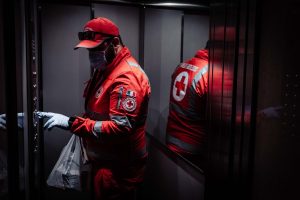If you are looking for a place where you can complete your phlebotomy training, the American Red Cross could be ideal for you.
In this guide, which results from essential research conducted by our team, we will show you what you can expect from the Red Cross.
It is well known that the American Red Cross is one of the most influential organizations that help save lives.
That is one of the reasons why the Red Cross also provides training programs.
In fact, many people in the Red Cross work voluntarily.
But they have some employees who get paid. One big thing about Red Cross training is that they have locations worldwide, so you can find something convenient close to where you live.
And remember, just because you train with the American Red Cross does not mean you have to volunteer there.
However, volunteering is an excellent way to gain valuable experience and improve your resume so you can easier find a job in the field of phlebotomy.
Page Navigation
- Red Cross Phlebotomy Training
- Essential Training Course Characteristics You Should Know About
- What Does the Training Program Include?
- Is the Red Cross Training Safe?
- Certification Exam
- Who Can Take the Red Cross Training?
- Where Can You Find a Job after the Completion of the Training?
- What Skills Should You Consider Having before Enrolling?
- Are There Other Volunteer Opportunities for Phlebotomists?
- Is There Room for Career Advancement?
- Are There Any Benefits of Working with the Red Cross?
Red Cross Phlebotomy Training
It is well known that employers are likely to research where you have trained, and they will take that into account.
Going through these extra steps before the start of the training could be of vital importance.
In fact, many phlebotomy training courses have only a small number of entry requirements, such as being at least 18 years old or obtaining a GED or a high school diploma.
Given that the Red Cross is one of the most organized and recognized organizations worldwide, they have some additional requirements.
You’ll need to:
- Complete a background check
- Turn in an application form with a physical form
- Turn in standard conditions given by the organization
- Pass an entrance exam
- Have received Hepatitis B vaccination
- Pass a tuberculosis test which is part of a physical exam
Since most other phlebotomy training programs do not have these requirements, this may seem like a lot.
But in fact, having the Red Cross on your resume as a training facility can make you look more confident and even make you a better phlebotomist.
Essential Training Course Characteristics You Should Know About
When we mention training, surely the first thing you think about is not what the training will include or who will be there, but the first thing that comes to mind is how much training costs.
So firstly we will mention how much this training will cost you.
Of course, the price depends on each program, because each training is different.
But in general, on average, phlebotomy training programs cost between $700 and $1,500.
So, the Red Cross program will fall precisely in the middle, given that the cost of the Red Cross phlebotomy training is $965, but that is likely to change as the years are passing.
This includes the tuition as well.
It is excellent considering the type of education you will receive from such a recognized organization.
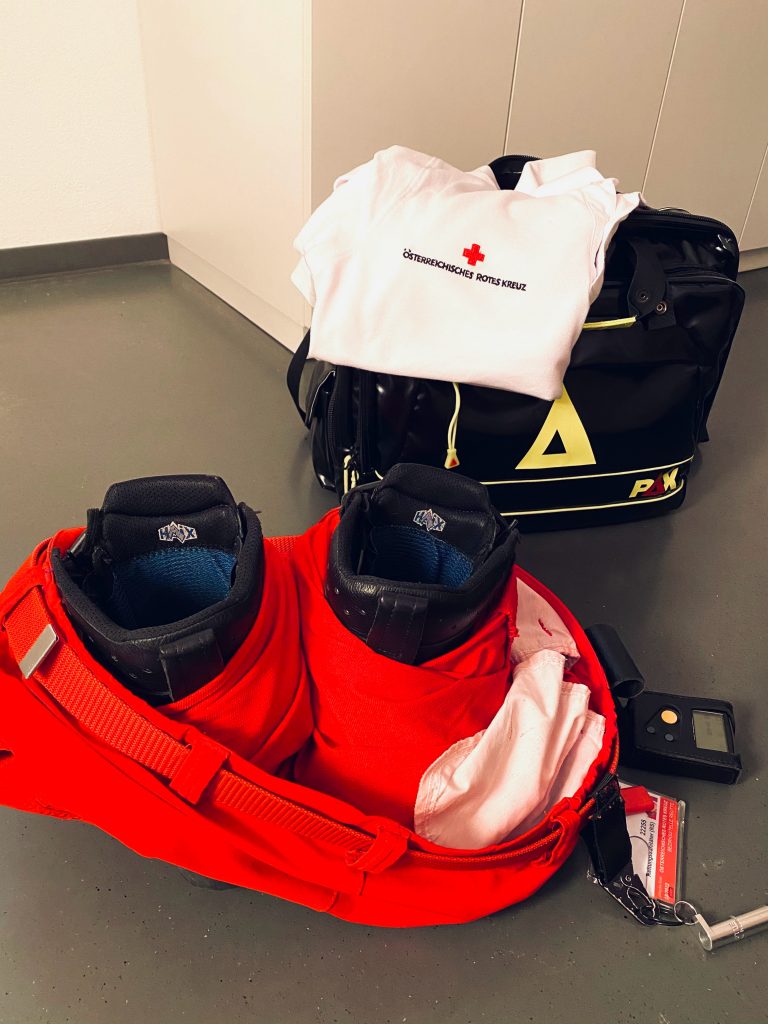
What Does the Training Program Include?
An essential part is to feel comfortable with different types of venipuncture.
Not every patient you work with during your career will have a visible vein in your arm.
Consequently, it may be more difficult to draw blood from an obese person.
The training program is divided into two parts, which includes 80 hours of classroom preparation and 40 hours of laboratory/practical work.
Learn things in the classroom before you need to do venipuncture.
The more tedious part of your program will consist of learning the basics of phlebotomy.
This does not only mean that you will only have to learn how to draw blood.
You have to know the science behind what you do as well.
While in class, you will learn the following:
- Human anatomy
- Medical terminology
- Collecting and processing blood
- Transporting blood to clinical labs
- Physiology
- Systems of the body
Once you’ve completed the learning part, you will be able to move to the more practical training, i.e., the hands approach part.
Mainly, here you will learn the different types of venipuncture, such as butterfly and syringe venipuncture.
The type of venipuncture you are going to learn will depend on what types of needles and syringes you will use to draw blood.
Is the Red Cross Training Safe?
The safety procedures include protecting yourself and your patients as well.
The point is to make sure that nothing gets contaminated.
Learn the importance of protective equipment such as bracelets and even goggles as you draw blood from the patient.
Given that safety is one of the most critical aspects of phlebotomy training, the Red Cross is no exception.
Learn the standard safety procedures established by the Disease Control centers.
Knowledge of laboratory safety procedures is also essential.
As long as you do not work in a laboratory, you will work closely to transfer blood samples.
Following laboratory safety rules will protect you and better organize you to make sure your patient has received the correct diagnosis.
Another aspect of safety training involves the proper labeling and transfer of blood samples.
It is the phlebotomist’s job to make sure that each sample taken is adequately labeled.
If there is a mixture, it can be extremely dangerous for the patient involved.
That is why phlebotomists get compensation insurance.
Certification Exam
Certification is not required in most countries.
But it will probably make it easier for you to find work quickly.
You may be able to start with a higher salary than without certification.
The best part is that it does not take that long to authorize.
Only a little extra training is needed.
Even with accreditation, you can expect the entire training program to last for months.
It is essential to mention that after completing the Red Cross training, you will have an opportunity to take the certification exam.
Take it through the National Association of Health Professionals.
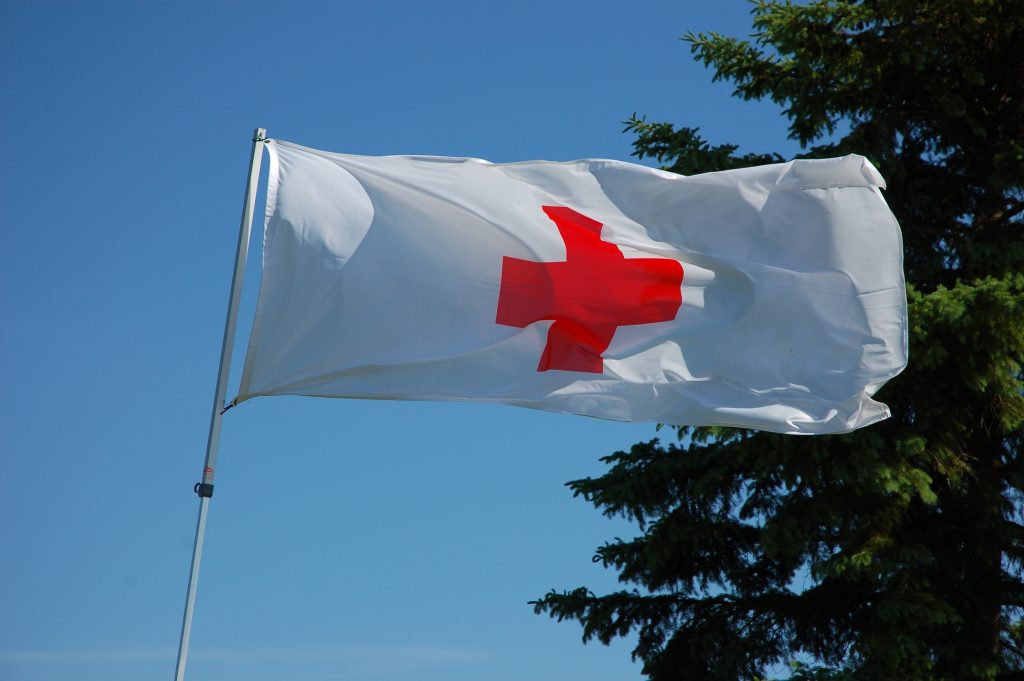
Who Can Take the Red Cross Training?
If you are interested in medicine or the healthcare field and want to hone your skills, consider these training options.
As long as you qualify, almost anyone can apply for the American Red Cross phlebotomy training.
But, let’s get back to the main topic, who can take the American Red Cross training?
Since most of you who are reading this article are not professionals in the healthcare field, we will first mention those who want to get through a medical career.
These are the ideal candidates for this training.
Given that phlebotomy is considered an entry-level career, many people make a living from it.
Hospitals and other medical facilities benefit from people who have been trained in accredited programs.
Next on our list, who can take the American Red Cross phlebotomy training are the first responders and rescuers.
And it is essential to note that the training will be more intensive.
The Red Cross offers an ECG technician and a phlebotomy program that includes CPR training, especially for the first responders.
Not only will you learn blood collection techniques, but you will also learn the usage of different equipment.
Some health professionals also go to phlebotomy training or at least part of it.
If you are in the healthcare field but want more venipuncture experience or education, the Red Cross can offer it.
They have a shortened 20-hour version of their training program.
It is only for the ones who are already medical professionals.
This short program focuses on the classroom and the practical skills needed to become a professional in the phlebotomy field.
So if you are interested in the medical field, it was never a better time to consider one of these options.
Where Can You Find a Job after the Completion of the Training?
It is a fact that there is a massive demand for phlebotomists.
The population is aging, and more blood tests are needed for different diagnoses.
There also is a lot of new and advanced technology.
Now more than ever, we can diagnose many various diseases and conditions through blood samples.
Here is one exciting piece of information:
Namely, in the period from 2014-2024, it is expected to grow over 25%.
So finding a stable job in any of these places should not be too difficult.
Furthermore, depending on where you work, you can make a decent salary.
On average, phlebotomists earn approximately $32,000 each year.
Due to these achievements and the aging of the population, more phlebotomists are needed to keep up with the demand.
One of the most popular places where a phlebotomist can work is probably the hospital, as you might expect.
Hospitals across the country regularly hire phlebotomists to keep up with the shortage.
And if you can’t find a job in or near your local hospital, there are many other options that people may not consider right away.
Emergency clinics and private surgeries also hire phlebotomists.
Sometimes, local blood banks will hire phlebotomists as staff rather than just volunteers.
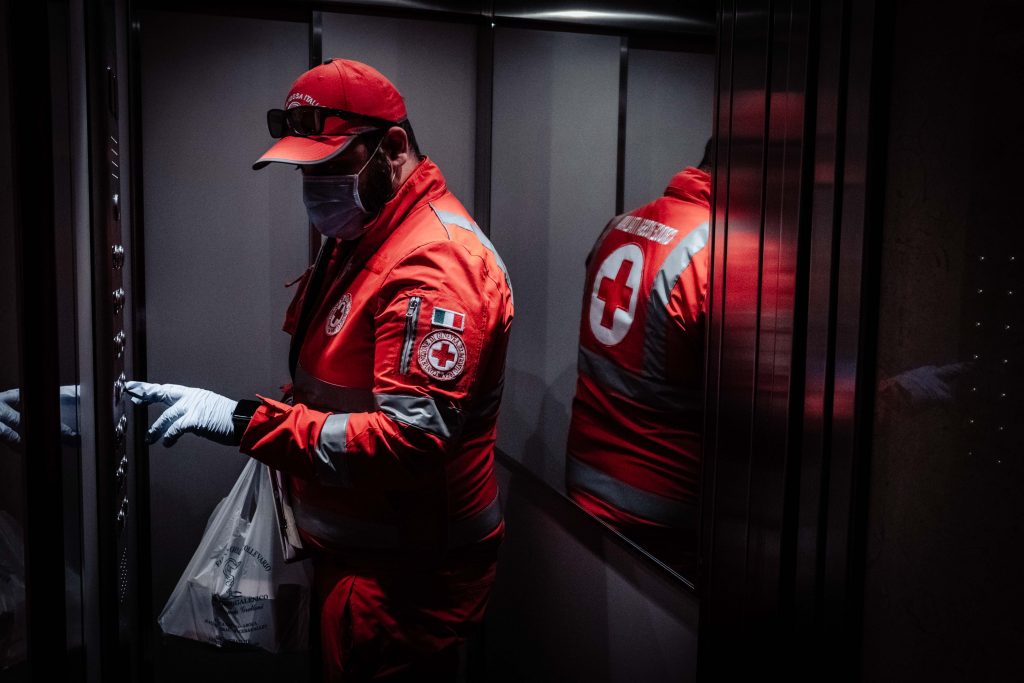
What Skills Should You Consider Having before Enrolling?
It is well known that phlebotomists should have a unique set of characteristics.
It is not that you will not be able to get the job done without these skills.
But if you struggle with it, then you might not enjoy it as much as you can.
But the American Red Cross will teach you the right skills to become a phlebotomist such as learning the educational side of things, as well as the physical requirements.
But there is more you should know in order to become a phlebotomist than just knowing how to draw blood.
This guide will cover some of the essential characteristics that a phlebotomist should possibly possess.
We’ve decided to mention the organization as a most required characteristic.
But why should you be highly organized?
Basically, when you take blood, you will put the samples in ampules.
Just as it is vital to pay attention to detail, these ampules need to be organized.
Phlebotomists should always have strong organizational skills.
It would be best if you would prepare your equipment before your patient arrives and be able to clean each one effectively.
It is essential to note that you will also need to have excellent conversation skills.
Namely, as a phlebotomist, you will work with a wide range of patients every day.
Some people are afraid to draw their own blood.
Furthermore, other patients may be negative or rude.
It is necessary to be able to understand and work with different types of people while maintaining your patience and empathy.
Working as a phlebotomist is the kind of work in which you need to be prepared to stand for several hours at a time.
Therefore, being a phlebotomist will probably take a significant part of your stamina.
You will probably be on your feet for many hours and will need to walk far back and forth to the lab on the spot.
Following security procedures can be crucial as well.
Safety rules are, of course, part of phlebotomy training.
But you must be sure that you will never go lax on those rules.
They are necessary to protect yourself and your patients.
The ability to work as a team player is one of the essential characteristics.
Even when working as a mobile phlebotomist, you will have to work with other staff members as well.
In hospitals and clinics, you are part of a team.
Therefore, you must work well with laboratory workers, other medical staff, etc.
Most importantly, one of the main tasks facing a phlebotomist is the proper labeling of blood samples where there is no room for mistakes.
Are There Other Volunteer Opportunities for Phlebotomists?
It is well known that hospitals will not always be willing to let phlebotomists work on their own without previous experience.
So volunteering at a Red Cross blood drive is a great way to put your foot in the door.
But many other places and organizations also are looking for qualified phlebotomists to do the volunteer work.
This opportunity could be used in order to gain experience.
You can also volunteer throughout your career.
It’s an excellent way to help people in need and give back.
There are plenty of job opportunities for a phlebotomist, including:
- Nursing homes
- Insurance agencies
- Plasma donation centers
- Local blood banks
- Prisons
- Drug treatment centers
- Veterans’ hospitals
Are there other available training programs?
It is important to note that you may even decide to become an instructor after completing phlebotomy or any other Red Cross training program.
Each year, Red Cross instructors teach life-saving skills to more than 9 million people.
You can become a regular disaster or disaster training instructor in a time of crisis or need.
Phlebotomy is just one part of the training offered by the American Red Cross.
By using their other training programs, you can make an adjunct to phlebotomy or vice versa.
It is always a good idea to enroll in more than one type of training.
The more you take, the more advancement opportunities may arise for you in the healthcare industry.
We have singled out some of the possible training programs that the American Red Cross offers, including:
- Water safety
- First aid
- CAN training
- CPR training
- Instructor training
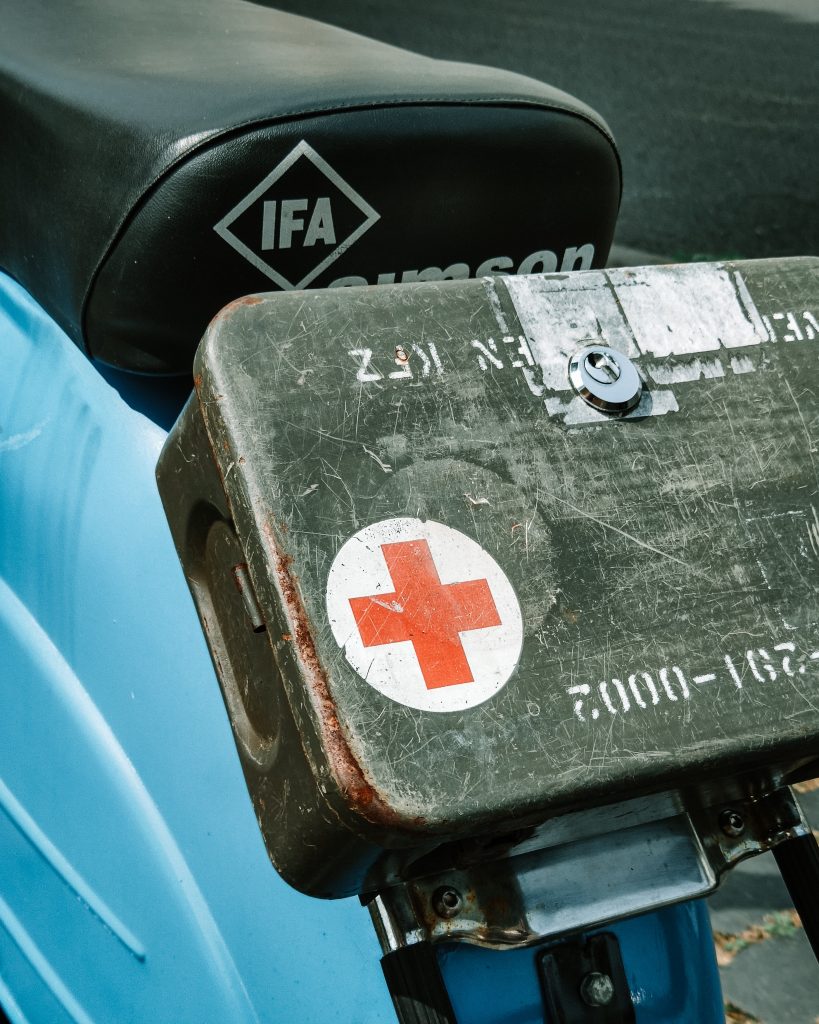
Is There Room for Career Advancement?
If you want to continue your education and get more medical training, there is a wide range of opportunities.
There is a remarkable fact that even some nurses and doctors have started their careers as phlebotomy technicians.
It’s one of the best and the most inexpensive ways to get into the medical field.
Plus, it offers enormous flexibility.
Thus, you can continue to train in other areas of health care while building your career.
It is well known that phlebotomy is a starting position, although you can use it as a springboard to jump into different careers.
You do not have to stay on the same thing forever.
Training, experience, or a combination of both can help you get a promotion or move on to a higher career in medicine.
With advanced training, you can choose a specialty for phlebotomy, such as a therapeutic phlebotomist.
Or, with experience, you can get a supervisory position.
Are There Any Benefits of Working with the Red Cross?
Working for this organization can represent an experience of essential importance.
Furthermore, it provides nearly half of the nation’s blood supply.
So, as you might expect, they are always looking for great phlebotomists to join their team.
If you have already completed their training program, you may even have the advantage of being hired by someone else.
In addition to saving lives, the Red Cross provides many benefits that every employee would be delighted to have.
If you complete phlebotomy training through the Red Cross, it does not mean that you have to work (or even volunteer) for them.
But it is a great opportunity.
The Red Cross’s atmosphere is quite different, and you may be given various tasks than what you would see in a hospital.
This is because they are committed to alleviating suffering across the country.
They are not only found in hospitals. They are found wherever they are most needed.
This page is also available in Spanish.

